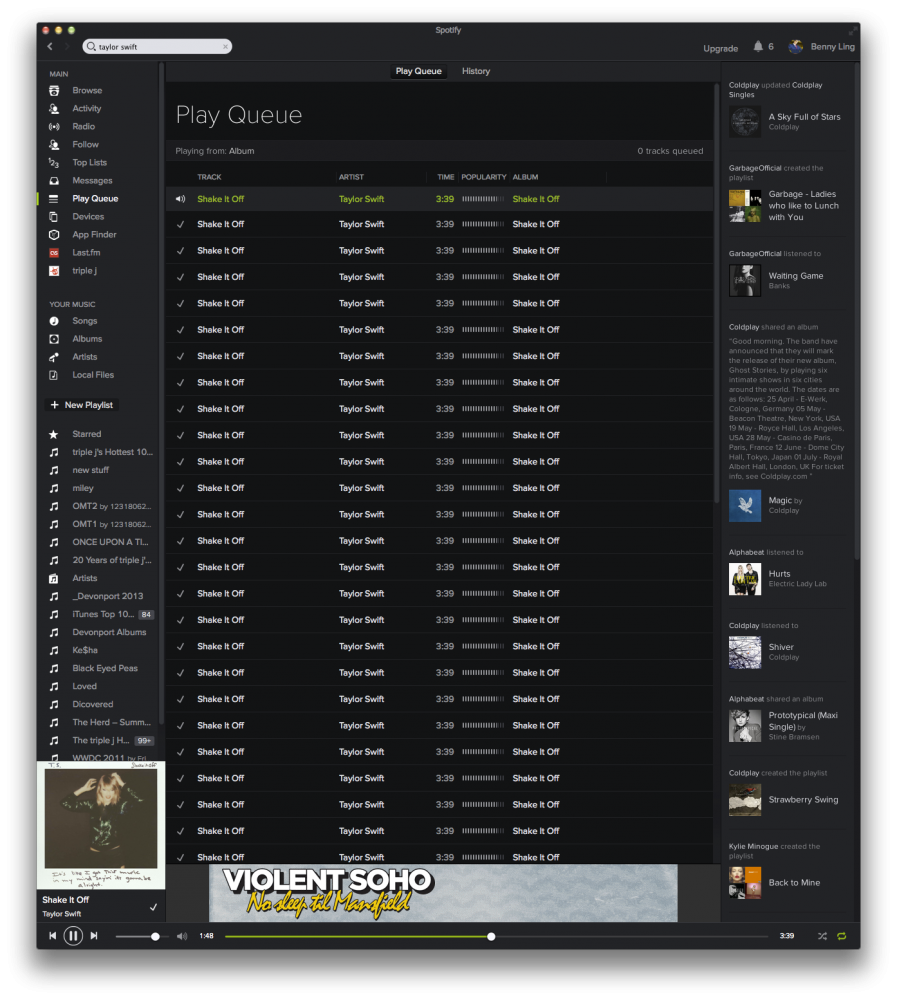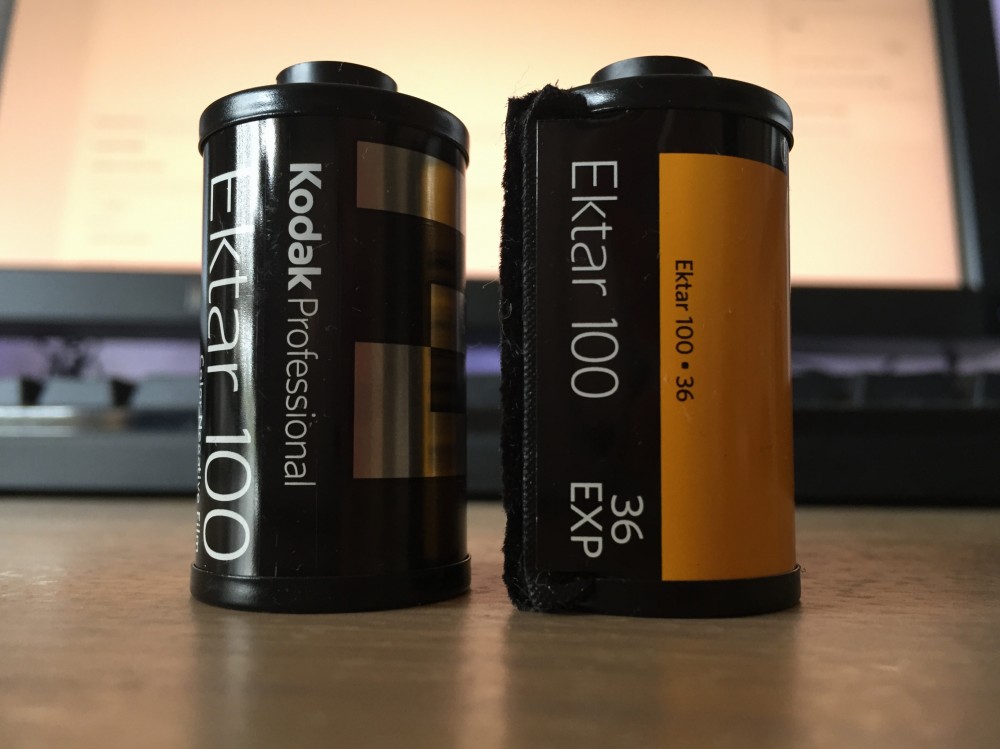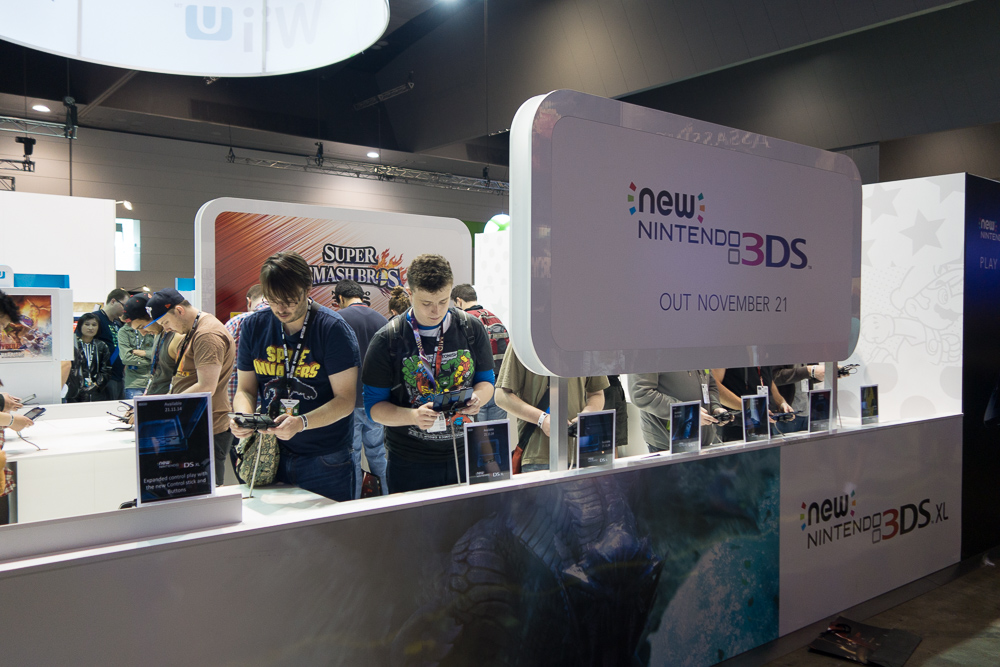 When Spotify was introduced to Australia a couple of years back, I wrote about how the music streaming service didn’t align with how I listened to music, both as a music curator and manic playlist creator.
When Spotify was introduced to Australia a couple of years back, I wrote about how the music streaming service didn’t align with how I listened to music, both as a music curator and manic playlist creator.
For the most part, Spotify still feels more like a music lending service rather than a music library of your own. On the unpaid version of Spotify, you borrow music, one or two tracks at a time, and then you’re forced to listen to an ad before you can continue borrowing (or to continue the library metaphor, return the previously-borrowed tracks back before getting more).
If there’s one place where Spotify is better than my own personally-curated music library, it’s in the area of music discovery.
By all accounts, I have way too much music for any one person to listen to. Everyone does. iTunes puts my library at just under 12,000 songs with a total play time of 33 days, which means that assuming I live to the current Australian life expectancy of 80 years, I can listen to my music library 630 times in its entirety before I die. That’s quite a lot of music, when you think about it.
But even the largest music library in the world isn’t any good when you listen to a new tune and get immediately hooked. New music comes out all the time, and while I was never a huge fan of the radio, I’ll occasionally get exposed to new music via the radio or other means. Following artists I like and collecting their music is one thing, but discovering cool new tunes from artists I haven’t heard of is another thing entirely. So what’s the solution for new music discovery?
Maybe I’m a little different to you, but a lot of my new music comes from pop. I listen to many varied genres of music, but a lot of it is “pop” — or that strange genre which seems to be played mostly on the radio, encompassing everything from alternative, rap, hip-hop — you get the picture. I’ve previously experimented with trawling lists such as the Take 40 countdown to see if there was any music I was interested in, then go off and find those individual songs in order to pirate them. I used to do a similar thing with the iTunes “top tracks” list, seeing as iTunes has 90-second previews for most of its song.
A little while back, I started playing some new music with Spotify because I couldn’t be bothered pirating an individual track, and it kind of went downhill from there: I added Spotify’s top tracks in Australia to a playlist and went for the overplay, putting it on repeat. Then it dawned on me: music streaming was easier than music ownership, at least when it came to new music, stuff I didn’t already own.
So, for the month of October, I re-subscribed to Spotify Premium, giving me the ability to download high-quality versions of the music I was streaming, as well as going ad-free. I timed my subscription so it would coincide with a brief stint at work and my working holiday in Canberra, so I could have my “October hits” playlist with me wherever I was.
It’s not the first time I’ve re-upped for Spotify Premium for a month or two — I did a similar thing earlier in the year when I went overseas, all because offline play and ad-free streaming without having to lug around all of my own music is an excellent idea.
I’ve since cancelled my Spotify subscription, because as much as I like listening to new music occasionally, I remember that I still have my own music library that I love dearly. It’s uniquely mine — ludicrous playcounts, carefully-curated playlists, and all. Sure, it’s only $12 a month, but for someone who only gets so much out of streaming music, I’d rather buy an album every other month and support artists that way.
These words part of Blogvember, a thing I just made up right then about getting back into blogging. You can read more words about Blogvember right over here, but the gist is that I'll be attempting to post something up on the blog every day in November 2014. Read other Blogvember posts.
 Film is so strange. For the first time in a long time, I took photos with my film rangefinder during my recent working holiday in Canberra, and that’s kind of a big deal because the last time I did so was back in January this year.
Film is so strange. For the first time in a long time, I took photos with my film rangefinder during my recent working holiday in Canberra, and that’s kind of a big deal because the last time I did so was back in January this year.
